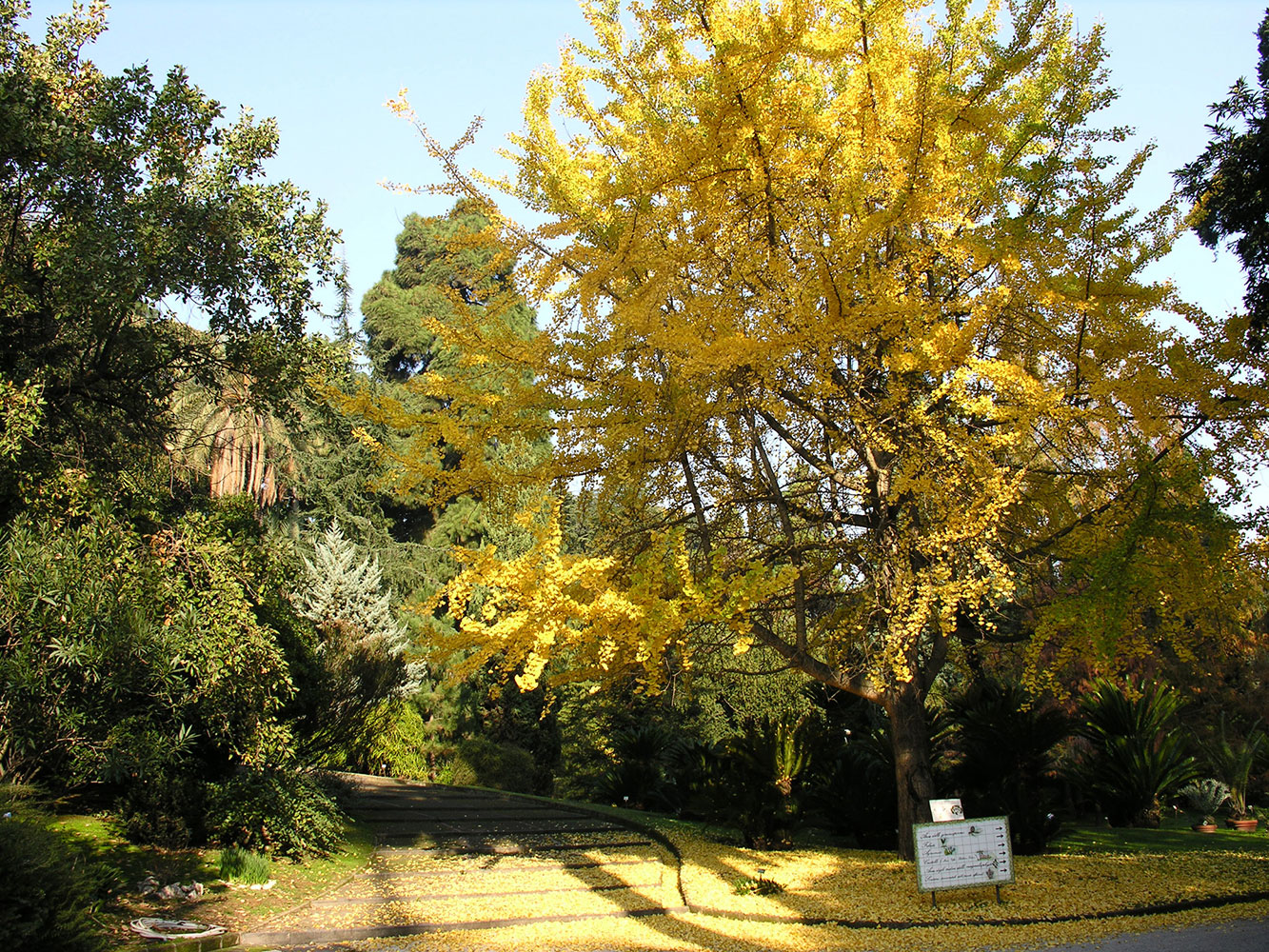Ginkgo biloba L.
Family: Ginkgoaceae
Common names: ginkgo, maidenhair tree
A deciduous tree native to China, the ginkgo can reach a height of 30 meters. Its leaves are fan-shaped and sometimes have a central division that splits the leaf blade into two lobes. The male reproductive structures are small and yellow, while the female structures, at maturity, are characterized by a yellowish pulp that emits a very unpleasant odor. Ginkgo biloba is the only surviving species of an ancient group of plants that was widespread during the era of dinosaurs, and it now exists naturally only in two small areas of eastern China. Cultivated in Buddhist monasteries and for ornamental purposes in various parts of the world, it is also a plant of medicinal interest, as it contains active compounds that improve blood circulation.
The name of the genus, Ginkgo, is believed to derive from the Chinese expression "yin-kyo," which means "silver fruit," referring to the appearance of the female reproductive structures. The epithet biloba refers to the often bilobated leaves.


 Sistema Museale di Ateneo
Sistema Museale di Ateneo